Collection of materials relating to neuro-ophthalmology as part of the Neuro-Ophthalmology Virtual Education Library.
NOVEL: https://novel.utah.edu/
TO
| Title | Creator | Description | Subject | ||
|---|---|---|---|---|---|
| 1 |
 |
Nystagmus Elicitation Techniques | Jorge C. Kattah, MD | An examination of the patient days or weeks after the acute event requires fixation block, and a variety of techniques, known as nystagmus elicitation maneuvers to detect the recent vestibular imbalance. | Nystagmus |
| 2 |
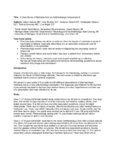 |
A Case Series of Mydriasis from an Anticholinergic Antiperspirant | Aileen Antonio, MD; Inna Bondira, DO; Cameron Holicki, DO; Christopher Glisson, DO; Tatiana Deveney, MD; Lina Nagia, DO | Causes of anisocoria span a wide range, from benign to life-threatening, making it a common indication for Neuro-Ophthalmology referrals. One such cause is related to pharmacologic mydriasis due to direct or systemic exposure. We present a case series of four patients with different presentations of... | Anisocoria; Mydriasis; Pharmacologic Anisocoria; Anticholinergic Antiperspirant |
| 3 |
 |
Anatomic and Physiologic Basis for Gaze Stability | Ariel Winnick and Meagan Seay, DO | Diagram describing the anatomic and physiologic basis of gaze stability. | Gaze Stability |
| 4 |
 |
Sensory Nystagmus | Tony Brune, DO; Jonathan D. Trobe, MD; Raed Behbehani, MD | A video describing sensory nystagmus. | Nystagmus; Sensory Nystagmus |
| 5 |
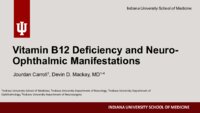 |
Vitamin B12 Deficiency and Neuro-Ophthalmic Manifestations | Jourdan Carroll; Devin D. Mackay, MD | This presentation covers vitamin B12 deficiency, including etiology, signs and symptoms, neurologic and ophthalmic findings, a case presentation and treatment. | Vitamin B12 Deficiency and Neuro-Ophthalmic Manifestations |
| 6 |
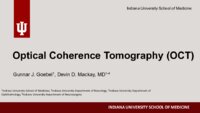 |
Optical Coherence Tomography (OCT) | Gunnar J. Goebel; Devin D. Mackay, MD | Introduction to OCT, including history, principles, interpretation, and applications. | Optical Coherence Tomography (OCT) |
| 7 |
 |
Optical Coherence Tomography Angiography | David Zhao; Amanda Henderson, MD | Video presentation covering a thorough overview of Optical Coherence Tomography Angiography (OCTA). | Optical Coherence Tomography Angiography; OCTA |
| 8 |
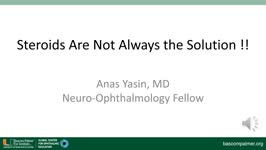 |
Steroids Are Not Always the Solution!! | Anas Yasin, MD | Leber Hereditary Optic Neuropathy (LHON) is the most common inherited mitochondrial disorder and typically affects young males. (https://eyewiki.aao.org/Leber_Hereditary_Optic_Neuropathy) | Leber Hereditary Optic Neuropathy (LHON) |
| 9 |
 |
How to Find Funding Sources | Elizabeth Frakes, MLIS, AHIP | Brief description of funding sources and how to find them. | Funding |
| 10 |
 |
How to Submit an IRB Application | Elizabeth Frakes, MLIS, AHIP | A general outline of the steps involved in submitting an IRB application for research. | Institutional Review Board (IRB) |
| 11 |
 |
Myelinated Retinal Nerve Fiber Layer (MRNFL) | Sparsh Jain, BS; Ryan D. Walsh, MD | Fundus photos demonstrating bilateral (right > left) peripapillary myelinated retinal nerve fiber layer (MRNFL) in a 14-year old boy. Note the typical appearance of MRNFL of a white patch with feathered margins involving the inner retina. In this case, the MRNFL is more prominent in the right eye, a... | Myelinated Retinal Nerve Fiber Layer; MRNFL; Congenital Anomalies |
| 12 |
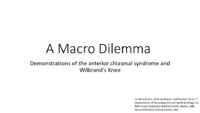 |
A Macro Dilemma: Demonstrations of the Anterior Chiasmal Syndrome and Wilbrand's Knee | Ariel Axelbaum, MD; Nurhan Torun, MD | Presentation reviewing two cases that demonstrate several cases of anterior chiasmal syndromes and the variability in patient presentations with sellar masses. | Anterior Chiasmal Syndromes; Masses of the Sella |
| 13 |
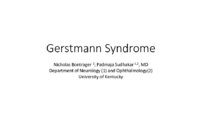 |
Gerstmann Syndrome | Nicholas Bontrager; Padmaja Sudhakar, MD | Gerstmann syndrome refers to a constellation of four neurologic deficits: agraphia, acalculia, finger agnosia , and left-right disorientation. All symptoms must be present for a diagnosis of true Gerstmann syndrome. | Gerstmann Syndrome |
| 14 |
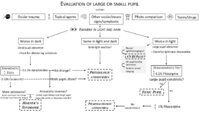 |
Pupil Evaluation Flowchart | Ariel Winnick; Eric Caskey, MD; Meagan Seay, DO | Flow chart outlining the evaluation of large or small pupils. | Pupil Evaluation |
| 15 |
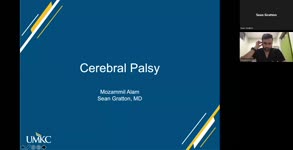 |
Cerebral Palsy | Mozammil Alam, Medical Student; Sean Gratton, MD | This video covers an overview of cerebral palsy. | Cerebral Palsy |
| 16 |
 |
Neuro-Ophthalmic Manifestations of Mitochondrial Disease | Abhimanyu S. Ahuja, BS; Sidney M. Gospe III, MD, PhD | Classically, mitochondrial diseases exhibit a maternal inheritance pattern because pathogenic mutations in mitochondrial DNA (mtDNA) are transmitted exclusively via the maternal lineage due to rapid degradation of sperm-derived mitochondria early in embryogenesis. However, mutations in mtDNA may occ... | Mitochondrial Disease; Pathophysiology |
| 17 |
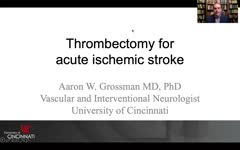 |
Thrombectomy for Acute Ischemic Stroke | Aaron W. Grossman, MD, PhD | A video overview of thrombectomy of acute ischemic stroke. Covers anatomy, history of treatment, and current practice. | Thrombectomy; Acute Ischemic Stroke |
| 18 |
 |
Behcet's Disease | Harinee Arunachalam, MSIV; Sean Gratton, MD | This video provides an overview of Behcet's Disease, a rare vasculitis of unknown etiology. | Behcet's Disease |
| 19 |
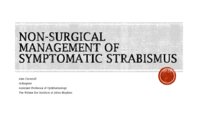 |
Non-Surgical Management of Strabismus | Alex Christoff, MD | An overview of non-surgical treatment of strabismus. | Strabismus |
| 20 |
 |
Pendular vs Jerk Nystagmus | Tony Brune, DO; Daniel R. Gold, DO | A video distinguishing pendular and jerk nystagmus. | Nystagmus; Pendular Nystagmus; Jerk Nystagmus |
| 21 |
 |
Voluntary Nystagmus | Christopher Glisson, DO; Janet Rucker, MD; Melody Merati; Eric Eggenberger, DO | Demonstration of voluntary nystagmus. | Voluntary Nystagmus |
| 22 |
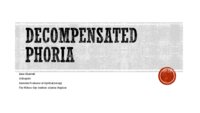 |
Decompensated Phoria | Alex Christoff, MD | An overview of decompensated phoria and its treatment. | Decompensated Phoria |
| 23 |
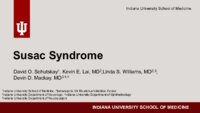 |
Susac's Syndrome | David O. Sohutskay; Kevin E. Lai, MD; Linda S. Williams, MD; Devin D. Mackay, MD | Overview of a case of Susac Syndrome. | Susac Syndrome |
| 24 |
 |
Pupil Exam | Carleigh N. Bruce, MD; Eric D. Habbe, MD; Ryan D. Walsh, MD | This video demonstrates how to conduct a pupillary exam on a patient. Specifically, pupils are evaluated in light and dark conditions, reactivity is assessed, and a swinging flashlight test is used to evaluate for a relative afferent pupillary defect. This video will be most helpful to early ophthal... | Pupil; Examination; Afferent Pupillary Defect; Swinging Flashlight Test; Reactivity |
| 25 |
 |
1% Pilocarpine Testing | Karl C. Golnik, MD | A brief description of using Pilocarpine to test the pupils in patients with anisocoria. | Pharmacological Testing; Pilocarpine |
